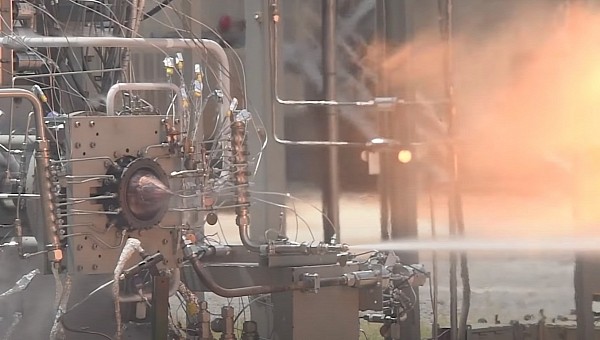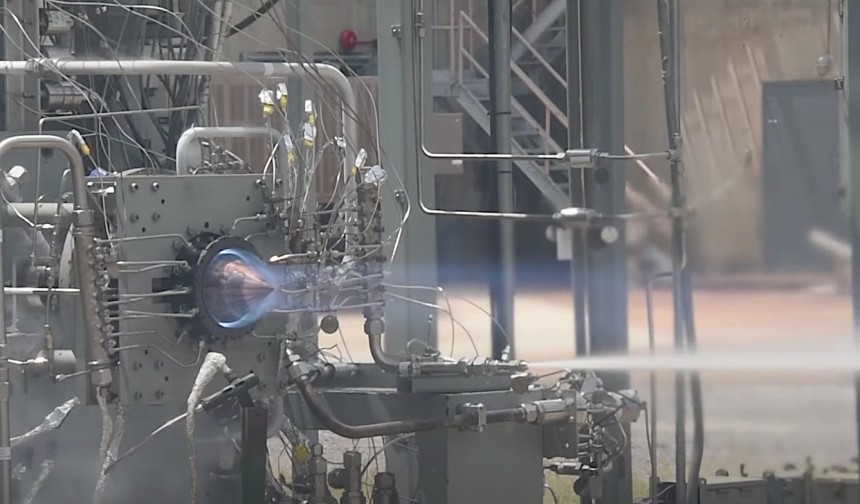As our civilization is gearing up to take big bold steps in the immediate neighborhood of our planet (read the Moon and Mars), rocket scientists have begun looking at ways that could enable more effective missions to these places, but possibly even further out into deep space.
True, we’ve already had several pieces of hardware go there already, but as things stand in space exploration, there’s always room for improvement.
A new rocket engine design has a big chance of turning into a major breakthrough, at least as far as how we travel through space goes. It’s called a rotating detonation rocket engine (RDRE), and one such design, in full-scale configuration, was put to the test by NASA scientists working for the Marshall Space Flight Center in Huntsville, Alabama, together with people from a company called IN Space.
RDRE works on the principle of detonation waves. Fuel and oxidizer get thrown into a channel in the engine assembly where they are detonated in a process that becomes self-sustaining. Pressure waves are born as a result of this, which travel at supersonic speeds, helping to propel whatever vehicle the engine is attached to.
The advantages of such a design are major. According to NASA, an RDRE has the potential to produce more power with less fuel, and that in turn could lead to future spaceships being capable of carrying more payload and mass.
Back in 2022, NASA and IN Space conducted hot fire tests of an RDRE design, but only this week were we informed the space agency and its partner have begun validating the data from the tests.
As per the available info, the technology was fired up about a dozen times for a total of about 10 minutes. When working at full power, the engine generated 4,000 pounds of thrust. In doing so, it led to average chamber pressure of 622 pounds per square inch, which according to NASA is “the highest pressure rating for this design on record.”
The RDRE was capable of holding together in these extreme conditions and without overheating, thanks to the materials and methods used in its construction, including a new type of copper alloy and 3D printing.
Separately, last year’s tests proved the engine’s deep throttling and internal ignition work as they should, but no additional details were provided on that.
Work on the rotating detonation rocket engine is far from over. Next up on the agenda is the creation and testing of a fully reusable 10,000-pound class RDRE – no timeline was provided on this.
Ultimately, if it proves successful and tests show clear advantages over the current liquid rocket engines, the RDRE design might power future human missions to the Moon, Mars and beyond.
A new rocket engine design has a big chance of turning into a major breakthrough, at least as far as how we travel through space goes. It’s called a rotating detonation rocket engine (RDRE), and one such design, in full-scale configuration, was put to the test by NASA scientists working for the Marshall Space Flight Center in Huntsville, Alabama, together with people from a company called IN Space.
RDRE works on the principle of detonation waves. Fuel and oxidizer get thrown into a channel in the engine assembly where they are detonated in a process that becomes self-sustaining. Pressure waves are born as a result of this, which travel at supersonic speeds, helping to propel whatever vehicle the engine is attached to.
The advantages of such a design are major. According to NASA, an RDRE has the potential to produce more power with less fuel, and that in turn could lead to future spaceships being capable of carrying more payload and mass.
Back in 2022, NASA and IN Space conducted hot fire tests of an RDRE design, but only this week were we informed the space agency and its partner have begun validating the data from the tests.
The RDRE was capable of holding together in these extreme conditions and without overheating, thanks to the materials and methods used in its construction, including a new type of copper alloy and 3D printing.
Separately, last year’s tests proved the engine’s deep throttling and internal ignition work as they should, but no additional details were provided on that.
Work on the rotating detonation rocket engine is far from over. Next up on the agenda is the creation and testing of a fully reusable 10,000-pound class RDRE – no timeline was provided on this.
Ultimately, if it proves successful and tests show clear advantages over the current liquid rocket engines, the RDRE design might power future human missions to the Moon, Mars and beyond.








